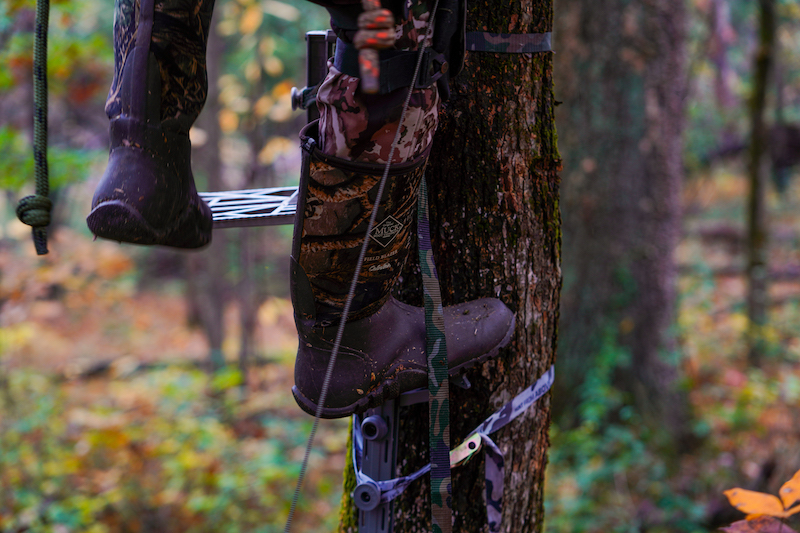Some of the best bowhunting happens during the year’s coldest months. Therefore, if you figure out a big buck’s haunts and habits, and pinpoint where to ambush him in the late season, you might have to endure endless hours of numbing temperatures to ensure you’re on site when he finally shows up.
Your hands and feet — your extremities — are your body’s first parts to get cold. That’s because your body makes hard choices to keep blood flowing to your core’s vital organs, even if it means sacrificing fingers and toes to keep you alive.
To help your body avoid such harsh choices, make sure you’re dressed for the occasion. Proper “layering” is the best way to keep warm for hours. Your base layer, the layer next to your skin, should wick sweat away from your body to keep you dry. If sweat builds up in clothes touching your skin, you’ll soon feel cold and clammy.
A sweat-wicking underlayer, covered by multiple warm, quiet outer layers, can keep your body comfortable during long, cold sits. Polypropylene long-johns are a great base layer, and wool and fleece make good warming outer layers.
Meanwhile, make sure you aren’t overdressed when walking to your stand. Carry your parka and maybe another layer when hiking. Besides making you cold, sweat can also cause you to stink, making it even harder to fool a buck’s nose.
How about those fingers and toes? Much like your body, hands and feet also sweat. Try wearing two pairs of gloves and two pairs of socks. Again, you want a wicking layer next to your skin and a warm layer atop it. Polypropylene is also a great wicking layer for hands and feet. You’ll find lots of options for the outer layer, but wool performs nicely and makes a great choice.
Just make sure your boots are large enough to accommodate two layers of socks. Tight-fitting boots restrict circulation, which can chill your toes. Also check the cuffs on your shirt sleeves. Make sure they’re loose enough to allow good circulation under multiple layers of shirts. If not, pick a different layer with looser cuffs. If you wear a watch, make sure it fits comfortably, not tightly.
You can also beat the cold at those critical pinch points (cuffs and ankles) by applying heat. Try using wrist and ankle straps with built-in pouches for disposable heat packs. Extra heat improves circulation and keeps your extremities warm.

Wear a wicking later inside your shoes. Photo Credit: ATA
Feet get infamously sweaty, but hands can sweat, too. Thin, wicking gloves are a good choice. Wear them under a larger pair of gloves or, better yet, mittens. Mittens keep your hands warmer than gloves because your fingers stay in contact with each other.
If you can’t stay warm on your own with help from clothes, try battery-powered socks and gloves. They cost more and require more maintenance than standard versions, but their price and function will be worth it if you stay warm.
After all, finger dexterity is critical to archers. That’s why most bowhunters wear thin gloves or no gloves to ensure they can make a quick shot without tugging and struggling to remove bulky gloves. You could also try a muff around your waist to keep your hands warm. You can stuff disposable heaters into the muff, or keep an old-school Jon-e handwarmer in there. In a pinch, tuck your hands into your armpits. In addition, keep your bow on a hook, not in your hands, while waiting. A bow’s aluminum riser and wooden grip aren’t warm.
Aluminum treestands aren’t warm either. Install a piece of carpet or, better yet, closed-cell foam on the platform to keep your feet warmer. And when all else fails, keep wiggling your fingers and toes to keep blood flowing. It might seem silly, but it helps.
Hunting whitetails is fun, but freezing isn’t. Dress in layers, keep your core warm, and keep blood circulating freely to your extremities. Those little things will keep you on stand during those long cold-weather sits.